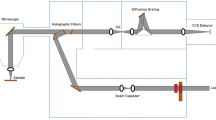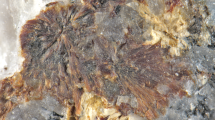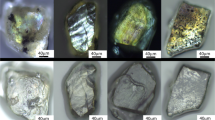Abstract
ONE of the crucial arguments put forward by Raman in support of 'tetrahedral' and 'octahedral' diamonds being associated with the Type I and Type II diamonds of Robertson, and Fox and Martin, was that the tetrahedral form should have a certain fundamental vibration frequency active in infra-red absorption and also in scattering, while for the octahedral form this same frequency should be inactive in absorption. Raman identified this frequency with the well-known scattering line at 1,332 cm.-1 and claimed that this frequency coincided with the infrared absorption “between 1350 and 1300 cm.-1” on Type I diamonds. One of the purposes of the paper by Willis and myself was to point out that this last was a serious mis-statement of fact, since the principal infra-red absorption maxima in this region of the spectrum lie at 1,286 cm.-1 and 1,376 cm.-1, of which the former is much more intense than the latter.
This is a preview of subscription content, access via your institution
Access options
Subscribe to this journal
Receive 51 print issues and online access
$199.00 per year
only $3.90 per issue
Buy this article
- Purchase on Springer Link
- Instant access to full article PDF
Prices may be subject to local taxes which are calculated during checkout
Similar content being viewed by others
Author information
Authors and Affiliations
Rights and permissions
About this article
Cite this article
SUTHERLAND, G. Infra-Red Absorption Spectrum of Diamond. Nature 157, 45–46 (1946). https://doi.org/10.1038/157045b0
Issue Date:
DOI: https://doi.org/10.1038/157045b0
This article is cited by
-
Infra-Red Absorption Spectrum of Diamond
Nature (1946)
Comments
By submitting a comment you agree to abide by our Terms and Community Guidelines. If you find something abusive or that does not comply with our terms or guidelines please flag it as inappropriate.



